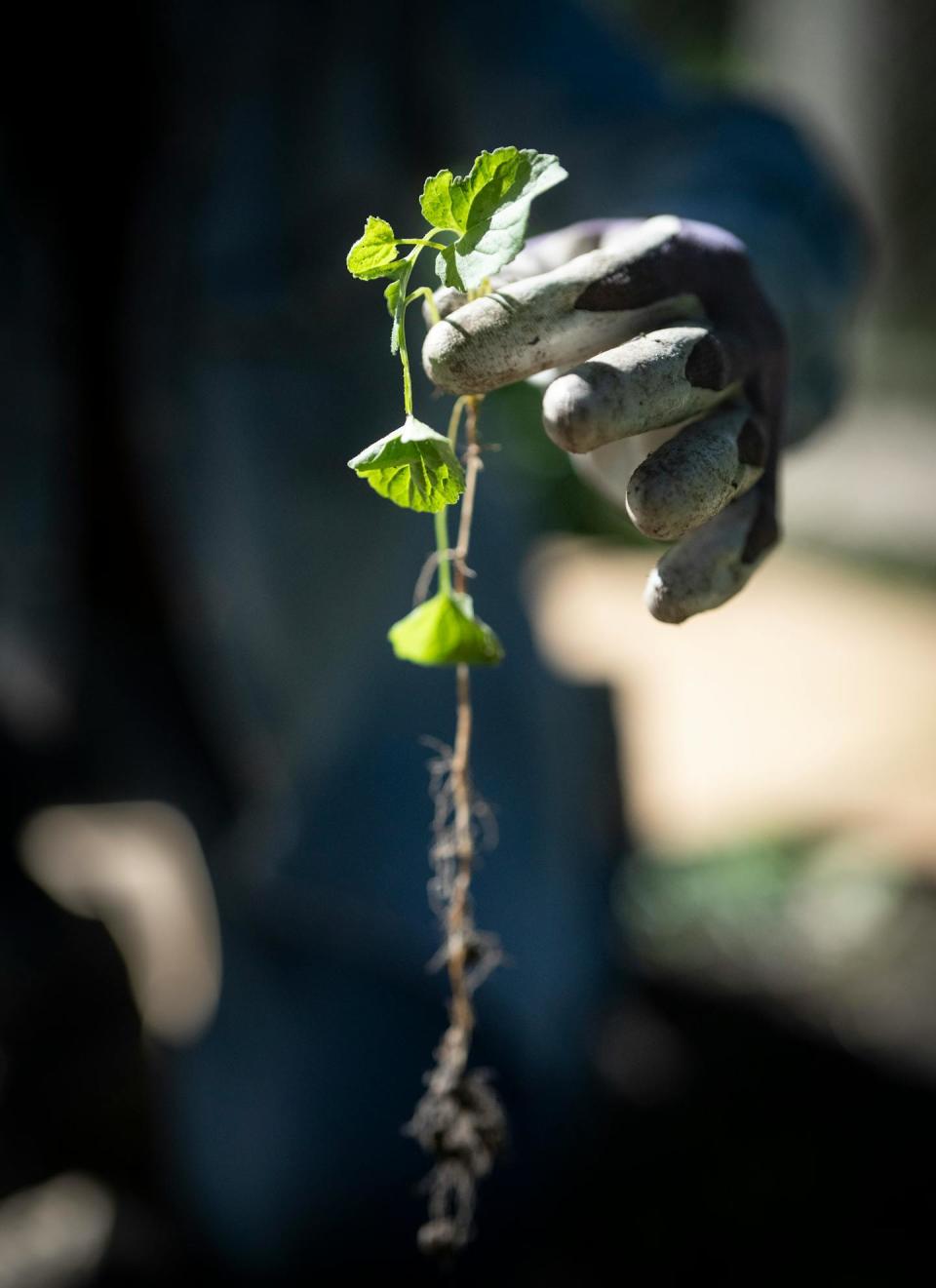What to know about the invasive purple flower that's taking over Minnesota yards
When Julie Ann Wegscheid first saw creeping bellflower along the fence line of her home in St. Paul's Como neighborhood, she didn't think much of it.
"These are kind of cool," she thought of the bell-shaped purple flowers, not giving them much attention.
After she learned they were invasive, she saw them everywhere. This year, as Wegscheid has seen creeping bellflower proliferate in neighbors' yards, the master gardener is trying to raise awareness in hopes that others will join her fight against the hard-to-kill plant's spread.
With the help of her daughter, Wegscheid made and posted signs around her neighborhood that identify creeping bellflower ("Wanted for crimes against gardens"), directing passersby to more information. She took a bouquet of creeping bellflower to a table at the neighborhood ice cream social, and she helps her neighbors remove the vexing species.
Creeping bellflower isn't new in Minnesota. It's native to parts of Europe and Asia and has been here for at least a century, sometimes sold in garden stores. Wegscheid thinks the drought-tolerant invasive has had an advantage in recent years as other plants struggled with lack of rain (it also loves rain). Lately, it's the talk of neighborhood Facebook pages around the Twin Cities, with posts aimed at helping neighbors identify and eradicate the plant.
Not all non-native plants are problems; many are easily contained and don't crowd out native flora. But creeping bellflower does, and when it comes to spreading, it's a triple threat, said Laura Irish-Hanson, a University of Minnesota Extension horticulture educator. It spreads through seeds found on the flowers (thousands per plant), through rhizomes, or small underground stems, and through tubers, thick stems where the plants store nutrients.
Because of this, the flower has crept into many places it's not supposed to be, in Minnesota and beyond. A Facebook group called Creeping Bellflower Battles chronicles the efforts of its 14,000 members to raise awareness of, eradicate and sometimes eat the plant, such as in salads — the flowers make a nice garnish and the leaves can serve as greens. ("If you can't beat 'em ... eat 'em?" as one member put it.)
Getting rid of creeping bellflower is not easy. But if nothing else, Irish-Hanson urged Minnesotans to remove the plants' flowers so they can't go to seed. She suggests snapping stems off below the flowers, holding a bag underneath to catch any seeds and the stems themselves. If your trash hauler allows it, tie up the bag and throw it in the trash.
That won't stop the plant's spread, but it can slow it down. To eradicate creeping bellflower, the rhizomes and tubers need to be removed by digging at least six inches underground and around. "Try to get every root and rhizome piece you can — that is going to be the most effective way to control the population," Irish-Hanson said. Gardeners may need to repeat the process because any little piece left underground could grow into a plant.
Don't be discouraged if you have a lot of creeping bellflower in your yard, Wegscheid said. "Do a little bit at a time," she said. "Keep it up. Be persistent."
Some herbicides kill creeping bellflower but may require repeat applications, Irish-Hanson said. The University of Minnesota Extension website has information about herbicides for creeping bellflower.
Irish-Hanson urged anyone looking for information about creeping bellflower to seek out science-backed sources; the University of Minnesota Extension is a great place to start, she said. And if you like the look of creeping bellflower but want something native, consider American bellflower or harebell.



